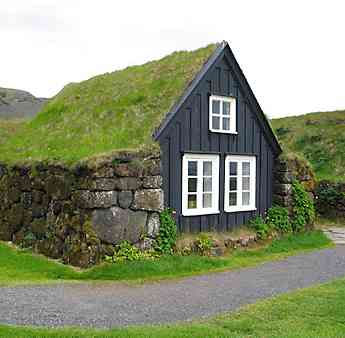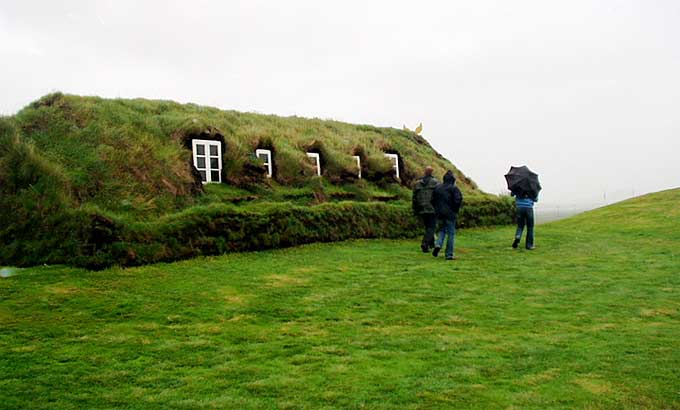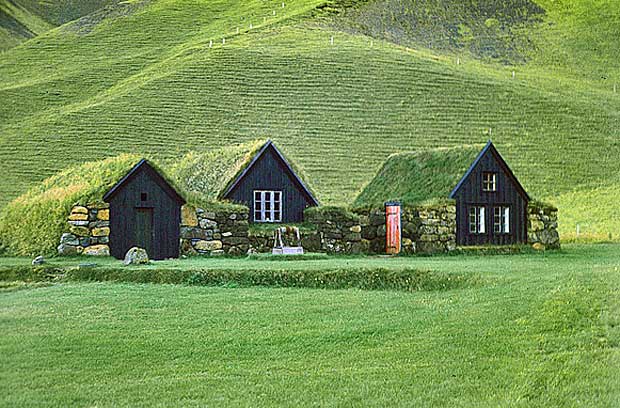Icelandic
Turf Houses
Our current culture today is all about finding ways to
make our homes more "green", or environmentally
friendly. While this cultural buzzword seems to be something
new, Iceland has been perfecting the model for energy
efficient homes for centuries. Icelandic turf houses have
been around for a very long time, and it seems their eco-friendly
construction may play a pivotal role on how homes are
built in the future.

Icelandic Turf House |
|
In most ancient cultures, turf houses were looked at
as being for the poor who couldn't afford better housing.
This wasn't the case in Iceland, where owning a turf house
was commonplace among both the poor, as well as the powerful
chiefs. Around the 9th century, grass was used to build
longhouses used by the Nordic people of the region, as
both living quarters and for work purposes. Many of these
homes were built at least partially underground (or bermed
with earth) as well.
Turf Wars …
As time progressed, so did the design of the turf houses.
Instead of sticking with the one, large community home
for people in the village, they began building separate
houses that were connected to each other through one central
passageway. This helped the Nordics to continue having
a strong sense of community, while having a place to call
their own.

Iceland's Turf Houses
You might be curious to know just what type of materials
were used in the construction of a turf house. The frame
for each house was made from timber gathered from trades
or driftwood, and grass turf was used to make the walls
and roofs. Wood was a rare commodity in Iceland, so villagers
were forced to barter or trade in order to get a ready
supply to build their homes with. The wealthier villages
were able to procure enough timber to have their walls
and floors made from wood, but the poor were forced to
just use the turf.
It Takes a Village …
When villagers needed grass to build a home, they would
venture off into the marshlands. The Nordics used a lot
of different tools to cut the turf in the marsh to fit
their specifications. The grass used to build their homes
would often need to be changed as the years went on. How
long a piece of turf would last, depended on several factors
including the craftsmanship of the individual who cut
it, the composition of the soil, and the environment.
Sooner or later, the grass would need to be changed.

More Turf Homes in Iceland
One of the reasons the Nordics used this type of material
was because it was free and in large quantities. The winter
months were always very cool, and turf makes a great insulator
for keeping in the warm, and keeping out the cold Turf
was also great at minimizing drafts, which kept air from
getting in or leaking out. This was extremely important,
as at this time, there was no way to centrally heat or
cool a home.
Conclusion
With our modern culture looking for ways to become more
energy efficient, it is highly possible that turf houses
may make a comeback in popularity, especially since they
can save a fortune on one's heating and cooling bills.
|